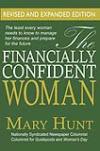The Right (Best, Easiest) Way to Pay Off Your Mortgage

I get the same basic question a lot, and it comes in several versions:
What’s the best way to pay off my mortgage quickly?
Should I invest with money I have available each month, or use that money to pay down my mortgage principal?
Is it better to put some extra money I have towards my Rapid Debt-Repayment Plan or should I pay down my mortgage?
Should I enroll in my lender’s bi-weekly mortgage payment plan?
While there are no hard and fast rules for all of these mortgage questions because every situation is different, there are general principles to guide you in your decision-making.
Principle #1: Your Contingency Fund trumps paying ahead on your debts.
Until your CF is fully funded with at least three months’ income (six is better, and I think I’m going to stop saying three), and your Freedom Account is at goal—don’t even think about paying extra on your mortgage.
Principle #2: Your mortgage should be the last debt you pay off.
As long as you have any unsecured debts (credit cards, student loans, automobiles and so on), you should not be prepaying your mortgage by sending in more than your regular, required payment. Once all other debts are paid off, you are in a position to begin rapidly paying down your mortgage. Here’s why: The interest on your mortgage is tax-deductible if you itemize your federal tax return, and the interest rate on your mortgage is probably much less than what you are paying on your other debts. Just remember to leave it for last.
Principle #3: Investing in your mortgage or the stock market depends on other factors.
Once you are in a position to begin rapidly repaying your mortgage you will probably be so energized that raging bulls could not hold you back. But you may be conflicted, thinking that perhaps you should invest the additional sum you have to pay toward your mortgage in some other way. That is a decision I cannot make for you. Just know that it is a good place to be, because if you are making that decision it means you are otherwise debt-free.
Whether you should dump all you can and as quickly as you can into your home mortgage to get it paid off completely, or you should invest in the stock market, depends on things like your age, what you’ve saved in retirement accounts and other similar factors. You need to speak with a qualified professional to get advice on which way to proceed. Of course you could always do both by splitting the sum you have to work with each month, paying half toward your mortgage principal and transferring the rest into an investment account.
Principle #4: Do not enroll in your lender’s formal bi-weekly payment plan.
First, these plans have enrollment fees, and they charge a fee every time you make a bi-weekly payment. But the biggest problem is that once you’re enrolled, you stay enrolled until you pay to convert back to what you had. So, this is easy. Do not enroll.
Instead, do this yourself without your lender’s permission, approval or consent. This gives you flexibility so you can skip the extra check any month you choose.
First you need to understand the principle behind the bi-weekly mortgage payment method and why it is so effective.
One mortgage payment each month means 12 payments in a year. If you make one-half payment every two weeks, you will make 26 bi-weekly payments or the equivalent of 13 monthly payments a year.
Paying a half-payment every two weeks is a painless way to make an extra monthly payment each year—a strategy that is not new by any means. The problem is that under normal circumstances few mortgage holders are ready or willing to accept and process half payments. Either they return half payments as insufficient or hold them until the other half shows up.
Here is a very neat way you can do this for yourself (and I highly recommend this method, provided you have complied with Principle #1): Each time you make your regular mortgage payment write a second check equal to 1/12 (one-twelfth) of one payment. On the memo line of that second check write, “Principal Prepayment Only.” Every month, check to make sure that your lender has indeed reduced your principal by the full amount of that second check in addition to any reduction by your regular payment.
Do this every month and at the end of one year you will have made the equivalent of 13 monthly payments—no fees, no contracts and no middleman demanding a commission. But here’s the added bonus to doing this yourself: You can switch back to your required mortgage payment only, any time you desire.
If you have an unexpected expense, for example, you can forget that second check without worries or negative consequences. You’re the boss in this plan and that’s why I like it so much.
This plan for getting all the benefits but none of the negatives of a bi-weekly mortgage payment plan is flawless, provided that you do not have a prepayment penalty clause in your mortgage contract. I used to say that such a clause is very rare. But that’s all changed.
Many of the recent subprime mortgages and HELs do have prepayment penalties. This means that if you dare to pay your debt ahead of schedule, you will get socked with a penalty equal to several months or up to a year’s worth of interest that the lender will lose should you pay early. You have to weigh the pros and cons.
The numbers do not lie, however. Adding one extra mortgage payment each year—with every cent of it going to reduce your principal and not a cent to interest or to line the pockets of your lender via various and sundry fees—will do dramatic things to your repayment time. Because mortgages are simple interest loans (you pay interest on the outstanding balance which is recalculated each time you make a payment), you are going to avoid paying a lot of interest, too.
Want to know how much you’ll save and how many years you can cut from your payback time? Check out my “Debt Investment” calculator at DebtProofLiving.com. This is part of the online member benefit package. You will find it in the Subscriber Area under “Calculators.”

Debt-Proof Living was founded in 1992 by Mary Hunt. What began as a newsletter to encourage and empower people to break free from the bondage of consumer debt has grown into a huge community of ordinary people who have achieved remarkable success in their quest to effectively manage their money and stay out of debt. Today, "Debt-Proof Living" is read by close to 100,000 cheapskates. Click here to subscribe. Also, you can receive Mary's free daily e-mail "Everyday Cheapskate" by signing up at EverydayCheapskate.com.
Originally published October 13, 2008.





